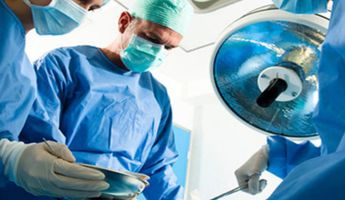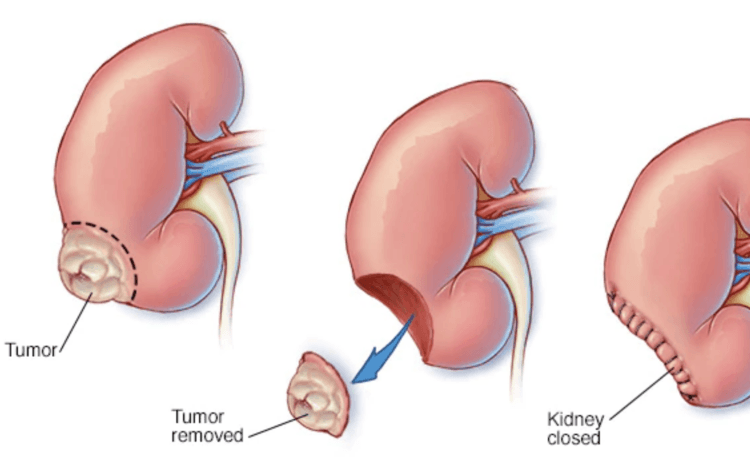Nephrectomy in Higashicho
Search and Compare the Best Clinics and Doctors at the Lowest Prices for Nephrectomy in Higashicho

Find the best clinics for Nephrectomy in Higashicho
No pricing info available
Morocco offers the best prices Worldwide
Price: $ 1,228
From 94 verified reviews
Hisanori Kakuma, 16 September 2020
Thank you for all the help you have given me
WHY US?
At Medijump, we're making medical easy. You can search, compare, discuss, and book your medical all in one place. We open the door to the best medical providers worldwide, saving you time and energy along the way, and it's all for FREE, no hidden fees, and no price markups guaranteed. So what are you waiting for?

Free

Best Price

Widest Selection

Risk-Free
What you need to know about Nephrectomy in Higashicho

Nephrectomy is the surgical removal of all or part of a kidney. There are two types of surgery for nephrectomy: radical nephrectomy (to remove the entire kidney and tissues of fat that surround the kidney) and partial nephrectomy (removes only diseased tissue from a kidney and leaves the healthy tissue in place). The surgery is performed to treat kidney cancer and other kidney diseases. Sometimes, it is also performed to remove a healthy kidney from a donor for a transplant.
What does a Nephrectomy Procedure Involve?
Nephrectomy can be performed through laparoscopic or open surgery. Both are performed under general anesthetic. Laparoscopic nephrectomy is usually performed to remove part of your kidney. Your surgeon makes small incisions in your abdomen to insert the laparoscope and small surgical tools. If your entire kidney needs to be removed, your surgeon will use open surgery. During open surgery, your surgeon makes one large incision on your abdomen or along your side.
How Long Should I Stay in Higashicho for a Nephrectomy Procedure?
You are required to stay in the hospital for two to five days. Plan to stay in Higashicho for around 10 to 14 days because you are likely to develop deep vein thrombosis after the surgery. You will also need to attend follow-up checkups, during which your surgeon will remove your stitches.
What's the Recovery Time for Nephrectomy Procedures in Higashicho?
The recovery period after a nephrectomy may take around three to six weeks. During your recovery period, you should avoid any strenuous activity and follow the post-operative instruction that your surgeon gives you. The instruction usually includes dietary restriction, exercise, and care for your healing wounds
What sort of Aftercare is Required for Nephrectomy Procedures in Higashicho?
Most people can function well with only one kidney. After the procedure, you can resume your daily routine and activities after 3 weeks. However, you will likely need checkups to monitor kidney function. These include monitoring your blood pressure, waste filtration, and protein urine levels. Since you only have one kidney, you will need to eat a healthy diet and engage in regular exercise to preserve normal kidney function.
What's the Success Rate of Nephrectomy Procedures in Higashicho?
Nephrectomy is generally safe and the risks are very small. Partial nephrectomy has about a 95% success rate. Nevertheless, the procedure carries potential risks, such as bleeding, injury to nearby organs, infection, post-operative pneumonia, and rare allergic reaction to anesthesia.
Are there Alternatives to Nephrectomy Procedures in Higashicho?
For certain illnesses, there are alternatives that do not need the removal of a kidney. The alternatives include renal embolization.
What Should You Expect Before and After the Procedure
After nephrectomy, you will no longer experience symptoms that you had before the surgery. The risk of cancer, as well as cancer spreading to other parts of your body, is also reduced. Remember that taking care of your remaining kidney is extremely important.
Whilst the information presented here has been accurately sourced and verified by a medical professional for its accuracy, it is still advised to consult with your doctor before pursuing a medical treatment at one of the listed medical providers
No Time?
Tell us what you're looking for and we'll reachout to the top clinics all at once
Enquire Now

Popular Procedures in Higashicho
Prices Start From $2,487

Prices Start From $825

Recommended Medical Centers in Higashicho for Nephrectomy

- Interpreter services
- Translation service
- Religious facilities
- Medical records transfer
- Medical travel insurance
- Health insurance coordination
- TV in the room
- Safe in the room
- Phone in the room
- Private rooms for patients available

- Interpreter services
- Translation service
- Religious facilities
- Medical records transfer
- Medical travel insurance
- Health insurance coordination
- TV in the room
- Safe in the room
- Phone in the room
- Private rooms for patients available

- Interpreter services
- Translation service
- Religious facilities
- Medical records transfer
- Medical travel insurance
- Health insurance coordination
- TV in the room
- Safe in the room
- Phone in the room
- Private rooms for patients available

- Interpreter services
- Translation service
- Religious facilities
- Medical records transfer
- Medical travel insurance
- Health insurance coordination
- TV in the room
- Safe in the room
- Phone in the room
- Private rooms for patients available

- Interpreter services
- Translation service
- Religious facilities
- Medical records transfer
- Medical travel insurance
- Health insurance coordination
- TV in the room
- Safe in the room
- Phone in the room
- Private rooms for patients available

- Interpreter services
- Translation service
- Religious facilities
- Medical records transfer
- Medical travel insurance
- Health insurance coordination
- TV in the room
- Safe in the room
- Phone in the room
- Private rooms for patients available

- Interpreter services
- Translation service
- Religious facilities
- Medical records transfer
- Medical travel insurance
- Health insurance coordination
- TV in the room
- Safe in the room
- Phone in the room
- Private rooms for patients available

- Interpreter services
- Translation service
- Religious facilities
- Medical records transfer
- Medical travel insurance
- Health insurance coordination
- TV in the room
- Safe in the room
- Phone in the room
- Private rooms for patients available
Nephrectomy in and around Higashicho
About Higashicho
Higashicho is an area in Koganei, a city located in the western part of Tokyo, Japan. Due to its ease of access to Tokyo and more affordable prices, Higashicho is frequented by tourists who wish to stay in a quiet and affordable accommodation than the ones in the center of Tokyo. Today, the area is also frequented by medical tourists looking for high-quality treatments in Japan. The clinics and hospitals in this area are known to have top quality services, reasonably priced treatments, state-of-the-art medical technology, as well as well-trained and licensed medical professionals.
Popular Parts of Higashicho
The most popular attraction near Higashicho is Koganei Park, which is a huge park with many different attractions. The park has free outdoor basketball courts, baseball fields, and tennis courts. It also has large open areas, perfect for those who want to go picnic or throw Frisbees. You can also find barbeque pits for rent. The park is also a good spot for plum blossom viewing in February and cherry blossom viewing in March. In fact, it is listed in the top 100 cherry blossom spots in Japan.
The park is also home to Edo-Tokyo Open Air Architectural Museum, a museum of historic Japanese buildings. This museum is a branch of the Edo-Tokyo Museum in Ryōgoku, Tokyo. The museum includes numerous buildings, from the middle-class ordinary Japanese houses to the homes of the powerful and wealthy, such as the residence of Takahashi Korekiyo, Japan’s former prime minister. In this museum, visitors can enter and explore various traditional Japanese buildings of different periods, styles, and purposes.
Transport in Higashicho
Since there is no international airport in Higashicho and Koganei, most international tourists arrive at the Narita International Airport. This airport serves domestic and international flights to numerous cities around the world.
Visas in Higashicho
Holders of passports issued by 66 countries, including all EU countries, Australia, the US, and the UAE, can visit and stay in Japan without a visa for up to 90 days. Most other countries not listed in the visa-free policy need to obtain a visa prior to arrival. Budget airlines, including Jetstar Japan, operates flights from this airport. Medical tourists can arrive in Koganei by train by taking the JR Chuo Line from Shinjuku west from thirty minutes, then take a taxi or bus to Higashicho.
Weather in Higashicho
Higashicho has four seasons. The summer (June to August) is hot and humid, with a lot of rainfall. Autumn (September to November) has mild weather with less humidity. November is the peak typhoon season. Winter (December to February) is dry, sunny, and cold, but the temperature rarely drops below 0°C. Spring (March to May) has pleasant weather and clear skies.
Additional Info
- Local Currency: Japanese Yen (JPY) is the local currency. 1 USD is approx. 106 JPY.
- Money & Payments: ATMs can be found around the area. Credit cards are not always accepted, so always bring cash with you. Tipping is not mandatory.
- Local Language: Japanese is the official language. English is not widely spoken, except in tourist areas.
- Local Culture and Religion: The main religion in the area is Shintoism and Buddhism. There is also a small group of Christian.
- Public Holidays: Emperor’s Birthday, Children’s Day, and Constitution Memorial Day are some of the public holidays celebrated in Higashicho.
Popular Searches
- Plastic Surgery in Thailand
- Dental Implants in Thailand
- Hair Transplant in Thailand
- Breast Augmentation Thailand
- Gastric Sleeve in Thailand
- Gender Reassignment Surgery in Thailand
- Laser Hair Removal in Bangkok
- Botox in Bangkok
- Dermatology in Bangkok
- Breast Augmentation in Bangkok
- Coolsculpting in Bangkok
- Veneers in Turkey
- Hair Transplant in Turkey
- Rhinoplasty in Turkey
- Stem Cell Therapy in Mexico
- Rhinoplasty in Mexico
- Liposuction in Mexico
- Coolsculpting in Tijuana
- Rhinoplasty in Korea
- Scar Removal in Korea
- Gastric Sleeve in Turkey
- Bone Marrow Transplant in India
- Invisalign in Malaysia
- Plastic Surgery in the Dominican Republic
- Tummy Tuck in the Dominican Republic
- Plastic and Cosmetic Surgery in Poland
- Rhinoplasty in Poland
- Hair Implant in Poland
- Dental Implants in Poland
- IVF in Turkey
